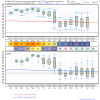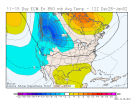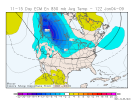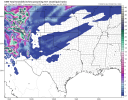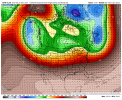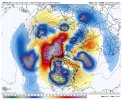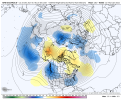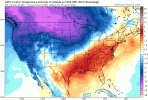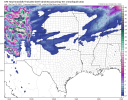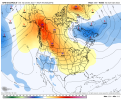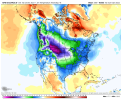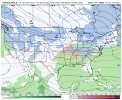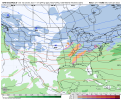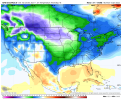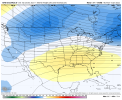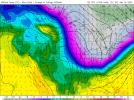For our sanity, it is important to realize this COULD easily still be another headfake based on cold bias in week 2 but hopefully not!! I just looked at the EPS run from a week ago. Then, it had for the SE US as a whole the period 12/26-1/1 (in week 2 then) averaging only slightly AN with 12/30-1/1 normal. Folks were starting to get optimistic again (including myself) as H5 was suggesting a pattern change during week 2. Here was the 850 anomaly map for the 120 hours ending 12Z on 1/2:
View attachment 99171
At RDU, it had 850 at only +1 for the 5 days ending 12Z on 1/2. It was then significantly cooler and I among others was liking it a lot thinking finally a light at the end of the tunnel.
Unfortunately, that same period is now at +7.5 there and it has 12/26-1/1 as one of the warmest on record/5.5 F warmer per day at 2M than it had a week ago. For 12/29-1/1 alone, the EPS is now a whopping 7 F warmer than it was a week ago for the E US! And this is with a -AO and slight -NAO though they’ve trended much weaker.
So, is today’s colder 12Z EPS run still another headfake for the E US? Nobody knows. It has for the 11-15 the NE US BN and the SE normal:
View attachment 99172
Will this still look this way one week from now? I sure hope so. But until we can get an Aleutian trough/+PNA reestablished like we last had in late November, all bets are off, especially with us soon to lose the -AO/-NAO. I love optimism but I hate being fooled over and over. Fool me once, etc.
The EPS looks like it is slowly trending toward an Aleutian trough/+PNA late in the runs today, and that is exactly what I want to actually verify. But……




